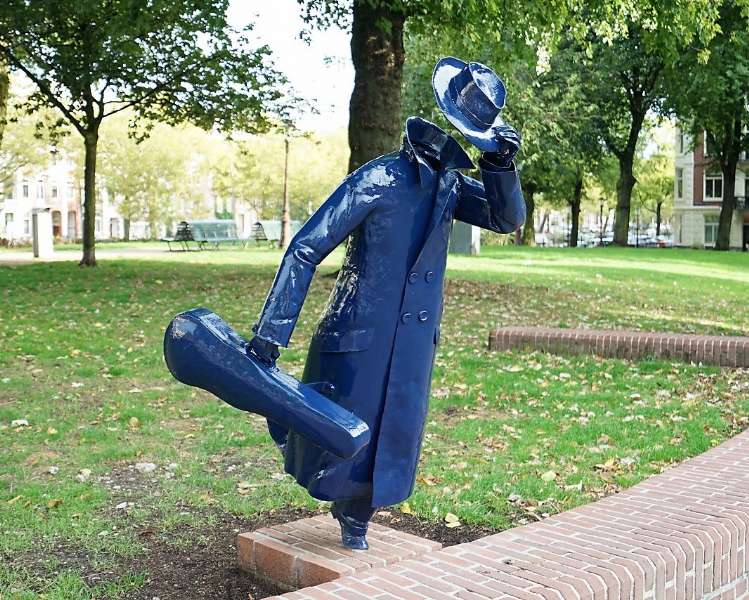https://www.washingtonpost.com/travel/2023/01/20/amsterdam-free-art-unknown-sculptor/
The mysterious art of Amsterdam’s ‘Unknown Sculptor’
The city of Amsterdam, Europe manages the works of an anonymous doctor. Here are 6 places to see it.
Rumors about the artist’s identity quickly spread, pointed fingers and all. The city council of Amsterdam, however, was able to reach the secret sculptor and struck a deal. The city was allowed to claim ownership of his work under one condition: It would keep the artist’s identity a secret.
The artworks are simply accredited to the “Unknown Sculptor.” And although Amsterdam has always been high on the lists of art connoisseurs worldwide, the story behind some of the city’s most accessible artworks remains widely unknown. Here’s where you can find the Unknown Sculptor’s work.
‘Man With Violin Case’
The first piece of work by the Unknown Sculptor appeared in 1982 in a location just outside of the realm of where a typical visitor would stray.
‘The Little Woodcutter’
In 1989, a tree in the middle of the bustling city center suddenly had a visitor: “Het Boomzagertje,” or “The Little Woodcutter.” This little guy, who can be a little difficult to spot, is not far from Museumplein, which houses some of the most well-known and prestigious art in the world.
‘The Violinist’
In the bend of the Amstel River is a round building that oozes grandeur: the Stopera. It houses both Amsterdam’s city hall and the National Opera & Ballet. Inside the former, next to the entrance, appears to be a bronze violinist breaking through the floor and striking his instrument as if he were delighting all those strolling along the water with a ditty.
‘The Breastplate’
“The Breastplate” is still the most magnetic of the Unknown Sculptor’s works, attracting glances from most who pass by. It can be found in front of the Oude Kerk, which straightforwardly translates to the Old Church; consecrated in 1306, it is Amsterdam’s oldest building.
The plate is seducing as ever, befitting its neighborhood. Except taking a closer look at this breast doesn’t cost you a penny.
‘The Accordion Player’
In Amsterdam’s Jordaan neighborhood, the anonymous artist struck again on an unassuming residential street. “The Accordion Player” (1994) is attached to the facade of a townhouse, in the style of what the Dutch call a “gable stone.”
‘Three Dandies in Conversation’
In Amsterdam’s Oud-West, you will find De Hallen, an old tram depot turned cultural hub that is full of impressive architecture and young entrepreneurs. The indoor food market Foodhallen is next to the movie theater Filmhallen.
“Three Dandies in Conversation” appeared on the street in 1995, making it the last of the Unknown Sculptor’s Amsterdam artworks.









